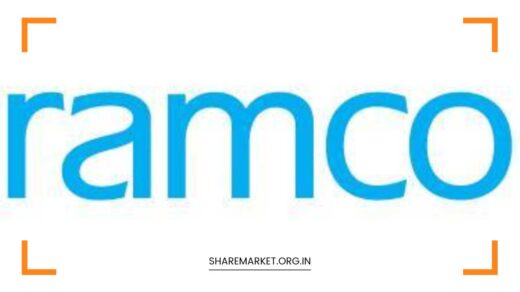5 Online Investments Options for Instant Tax Saving

Instant Tax Saving
Online Investment Options for Instant Tax Savings
Effective tax planning is essential for maximizing financial benefits and minimizing liabilities. By making strategic investments, you can achieve significant tax savings while also securing your financial future.
This guide explores five prominent online investment options that not only offer tax benefits but also bring convenience to your investment journey.
Each option provides a unique way to reduce your taxable income, and understanding these can help you make informed decisions about your finances.
1. Equity Linked Savings Scheme (ELSS)
What Is ELSS?
Equity Linked Savings Scheme (ELSS) is a popular tax-saving investment option that falls under the category of mutual funds. ELSS funds primarily invest in equities, providing the potential for higher returns compared to other tax-saving instruments. They come with the added benefit of tax deductions under Section 80C of the Income Tax Act.
Benefits of ELSS
- Tax Benefits: Contributions up to Rs 1.5 lakh in a financial year qualify for tax deduction under Section 80C.
- Capital Appreciation: As ELSS funds invest in equities, they have the potential for significant capital growth.
- Liquidity: ELSS investments have a lock-in period of just 3 years, making them relatively more liquid compared to other tax-saving options with longer lock-in periods.
- Diversification: Investing in ELSS provides exposure to a diversified portfolio of stocks, which can help in mitigating investment risks.
How to Invest in ELSS
- Research Funds: Begin by researching different ELSS funds available in the market. Look into their past performance, fund manager’s expertise, expense ratio, and the types of stocks they invest in.
- Choose a Platform: Select a reputable online investment platform or mutual fund company where you wish to invest. Ensure the platform supports ELSS investments and has a smooth KYC (Know Your Customer) process.
- Complete KYC: Register on the chosen platform and complete the KYC process by submitting identification and address proof documents.
- Make an Investment: Log in to your account, choose the ELSS fund of your choice, and decide whether to invest via a lump sum or through a Systematic Investment Plan (SIP). SIP allows you to invest a fixed amount regularly, providing the benefit of rupee cost averaging.
- Monitor Your Investment: Regularly review your ELSS investments to track their performance and make adjustments as needed.
Key Considerations
- Market Risks: Since ELSS funds invest in the stock market, they are subject to market volatility and risks. It is crucial to assess your risk tolerance before investing.
- Lock-in Period: The 3-year lock-in period means your investment cannot be withdrawn before the end of this term. Plan your investment horizon accordingly.
2. Tax Saver Fixed Deposit (FD)
What Is a Tax Saver FD?
A Tax Saver Fixed Deposit (FD) is a special type of fixed deposit offered by banks that provides tax benefits under Section 80C of the Income Tax Act. It has a fixed tenure of 5 years and offers a guaranteed return on investment.
Benefits of Tax Saver FD
- Guaranteed Returns: Unlike equity investments, Tax Saver FDs provide assured returns, making them a safe investment option.
- Tax Benefits: Contributions up to Rs 1.5 lakh in a financial year are eligible for tax deductions under Section 80C.
- Simplicity: The investment process is straightforward, and the returns are predictable.
How to Invest in Tax Saver FD
- Check Availability: Verify with your bank if they offer Tax Saver FD accounts and whether they provide online opening options.
- Open an FD Account: Use your bank’s online banking facility to open a Tax Saver FD account. You will need to transfer funds from your savings account to the FD account.
- Receive FD Receipt: Upon completion of the transaction, you will receive an FD receipt via email or physical mail. This receipt serves as proof of your investment.
- Track Your Investment: Monitor the interest earned on your FD and ensure that it aligns with your financial goals.
Key Considerations
- Lock-in Period: Tax Saver FDs come with a lock-in period of 5 years, during which premature withdrawals are not permitted.
- Interest Rates: While Tax Saver FDs offer guaranteed returns, interest rates are typically lower compared to equities or mutual funds.
3. Term Insurance Policy
What Is Term Insurance?
Term insurance is a type of life insurance that provides coverage for a specific period (or term) and pays out a lump sum amount to the beneficiary in case of the policyholder’s death during the term. It is a cost-effective way to ensure financial security for your loved ones.
Benefits of Term Insurance
- Affordable Premiums: Term insurance policies are generally more affordable than other types of life insurance due to the absence of investment components and lower commissions.
- Tax Benefits: Premiums paid towards term insurance are eligible for tax deduction under Section 80C of the Income Tax Act. Additionally, the death benefit received by the beneficiary is tax-free under Section 10(10D).
- High Coverage: Term insurance offers a substantial sum assured at relatively low premiums, ensuring comprehensive coverage for your family.
How to Invest in Term Insurance
- Compare Policies: Use online insurance comparison tools to compare different term insurance plans based on coverage, premium rates, and terms.
- Apply Online: Choose a policy that fits your needs and apply online through the insurance provider’s website. Provide the necessary personal details and complete the required forms.
- Pay Premium: After completing the application, pay the premium online. You will receive a digital policy receipt as proof of your investment.
- Review Coverage: Regularly review your term insurance policy to ensure that it continues to meet your coverage needs.
Key Considerations
- Policy Term: Choose a policy term that aligns with your financial goals and responsibilities. Longer terms offer extended coverage but may come with higher premiums.
- No Investment Component: Unlike other insurance products, term insurance does not include an investment component, focusing solely on providing coverage.
4. Health Insurance Policy
What Is Health Insurance?
Health insurance provides coverage for medical expenses incurred due to illness or injury. It is essential for managing healthcare costs and offers tax benefits under Section 80D of the Income Tax Act.
Benefits of Health Insurance
- Tax Benefits: Premiums paid for health insurance policies are eligible for tax deductions up to Rs 15,000 for individuals below 60 years of age, and up to Rs 20,000 for senior citizens above 60 years.
- Financial Protection: Health insurance helps in covering medical expenses, reducing out-of-pocket costs and providing financial security in times of health crises.
- Additional Benefits: Many health insurance policies offer additional benefits like no-claim bonuses, cashless hospitalizations, and wellness programs.
How to Invest in Health Insurance
- Research Plans: Explore various health insurance plans online to find one that suits your needs and budget. Consider factors like coverage, network hospitals, and claim settlement ratio.
- Apply Online: Select a health insurance plan and apply online through the insurer’s website. Fill in the required details and complete the application process.
- Minimal Checkups: For individuals below 45 years, health insurance applications typically involve minimal medical checkups.
- Receive Policy Documents: After purchasing the policy, you will receive digital policy documents and an e-receipt for your records.
Key Considerations
- Coverage Limits: Ensure that the policy provides adequate coverage for medical expenses, including hospitalization, surgery, and pre- and post-hospitalization costs.
- Pre-existing Conditions: Check the policy terms related to pre-existing conditions and waiting periods.
5. Public Provident Fund (PPF)
What Is PPF?
The Public Provident Fund (PPF) is a long-term savings scheme backed by the Government of India. It offers tax benefits, guaranteed returns, and tax-free interest. The PPF account has a tenure of 15 years, with provisions for partial withdrawals and loans.
Benefits of PPF
- Tax Benefits: Contributions up to Rs 1.5 lakh in a financial year qualify for tax deduction under Section 80C. Additionally, interest earned and maturity proceeds are tax-free.
- Guaranteed Returns: PPF provides a fixed annual interest rate, which is currently 8.8% (subject to change by the government).
- Safety: Being a government-backed scheme, PPF is considered a low-risk investment option with guaranteed returns.
How to Invest in PPF
- Open an Account: Many banks and post offices offer the facility to open PPF accounts. Choose a bank that offers online PPF account opening and complete the application process.
- Make Deposits: Contribute to your PPF account regularly. You can make deposits through online banking or at the bank branch.
- Monitor Your Account: Regularly check your PPF account to track contributions, interest earned, and balance.
Key Considerations
- Lock-in Period: The PPF account has a lock-in period of 15 years. However, partial withdrawals and loans are allowed under specific conditions.
- Interest Rates: The interest rate is subject to periodic changes by the government, so it is essential to stay updated with the latest rates.
Additional Tax-Saving Tips
1. Consider Online Donations
Online donations to eligible charities can qualify for tax deductions under Section 80G. Ensure that the charity is registered and provides a receipt for your donation.
2. Keep Records
Maintain digital records of all your tax-saving investments and transactions. This will make it easier to track your investments and file your tax returns.
3. Consult a Financial Advisor
For personalized advice and tailored investment strategies, consider consulting a financial advisor. They can help you create a comprehensive tax-saving plan that aligns with your financial goals.
Final Remarks
Leveraging online investment options for tax savings can streamline your financial planning and offer substantial benefits. From ELSS funds and Tax Saver FDs to term insurance, health policies, and PPF accounts, each option provides unique advantages and caters to different investment needs.
By understanding these options and incorporating them into your financial strategy, you can optimize your tax savings and build a secure financial future.

















